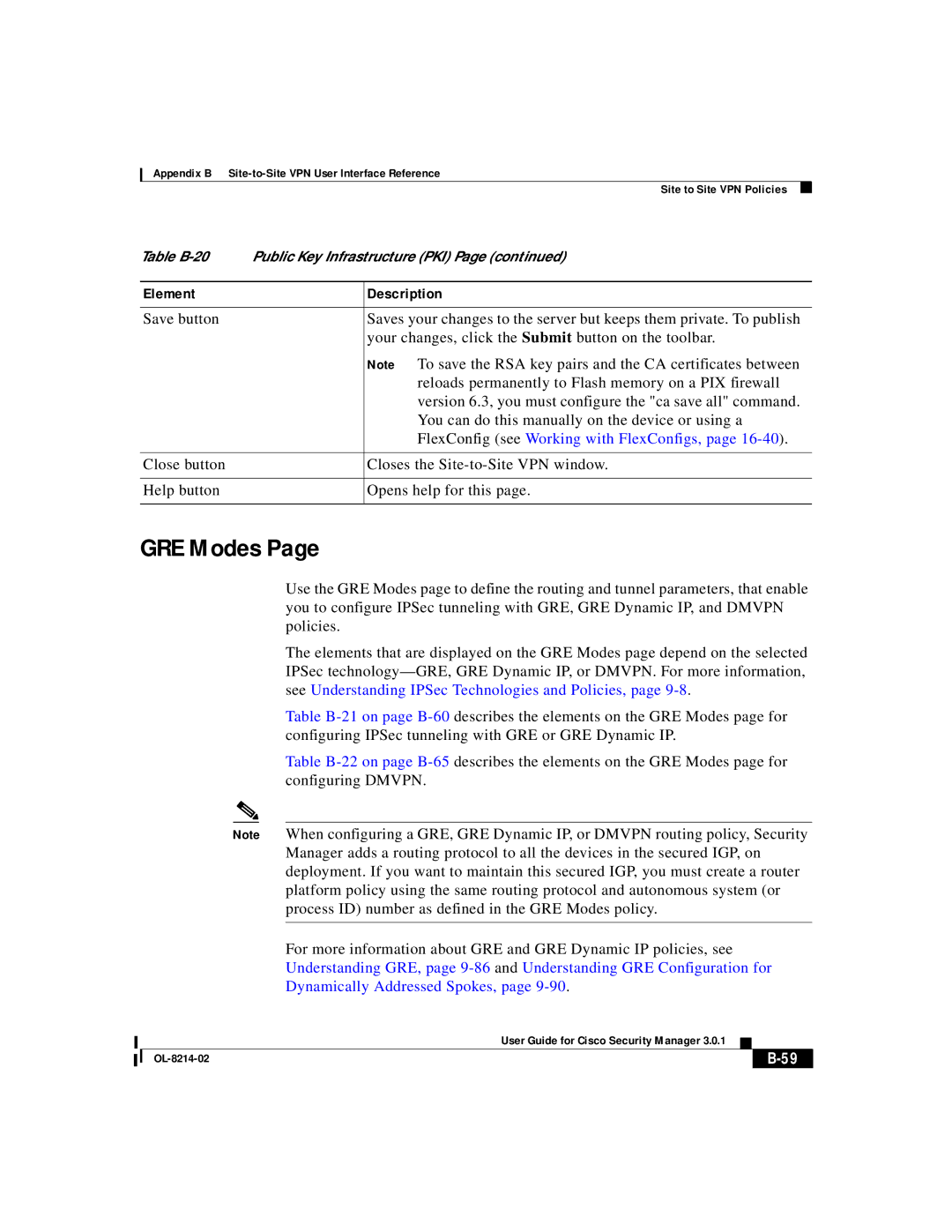
Appendix B Site-to-Site VPN User Interface Reference
|
| Site to Site VPN Policies |
|
Table | Public Key Infrastructure (PKI) Page (continued) |
| |
|
|
|
|
Element |
| Description |
|
|
|
|
|
Save button |
| Saves your changes to the server but keeps them private. To publish |
|
|
| your changes, click the Submit button on the toolbar. |
|
|
| Note To save the RSA key pairs and the CA certificates between |
|
|
| reloads permanently to Flash memory on a PIX firewall |
|
|
| version 6.3, you must configure the "ca save all" command. |
|
|
| You can do this manually on the device or using a |
|
|
| FlexConfig (see Working with FlexConfigs, page |
|
|
|
|
|
Close button |
| Closes the |
|
|
|
|
|
Help button |
| Opens help for this page. |
|
|
|
|
|
GRE Modes Page
Use the GRE Modes page to define the routing and tunnel parameters, that enable you to configure IPSec tunneling with GRE, GRE Dynamic IP, and DMVPN policies.
The elements that are displayed on the GRE Modes page depend on the selected IPSec
Table
Table
Note When configuring a GRE, GRE Dynamic IP, or DMVPN routing policy, Security Manager adds a routing protocol to all the devices in the secured IGP, on deployment. If you want to maintain this secured IGP, you must create a router platform policy using the same routing protocol and autonomous system (or process ID) number as defined in the GRE Modes policy.
For more information about GRE and GRE Dynamic IP policies, see
Understanding GRE, page
Dynamically Addressed Spokes, page
|
| User Guide for Cisco Security Manager 3.0.1 |
|
|
|
|
| ||
|
|
| ||
|
|
|
